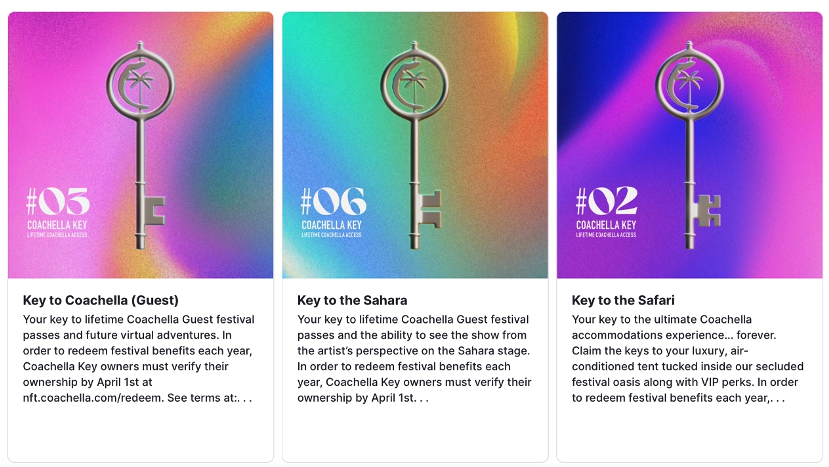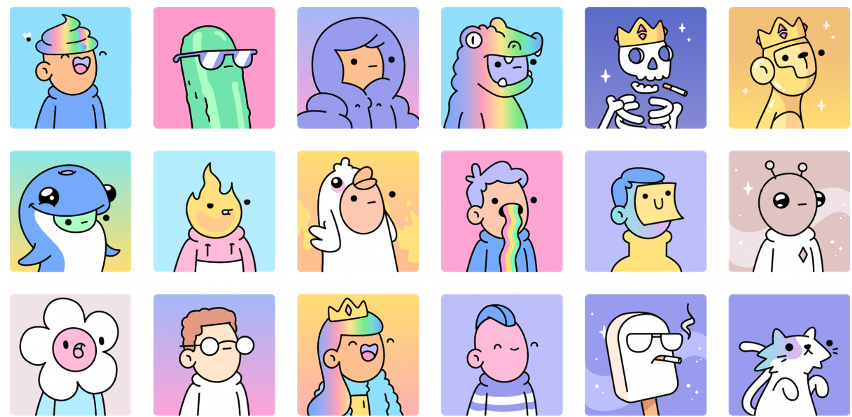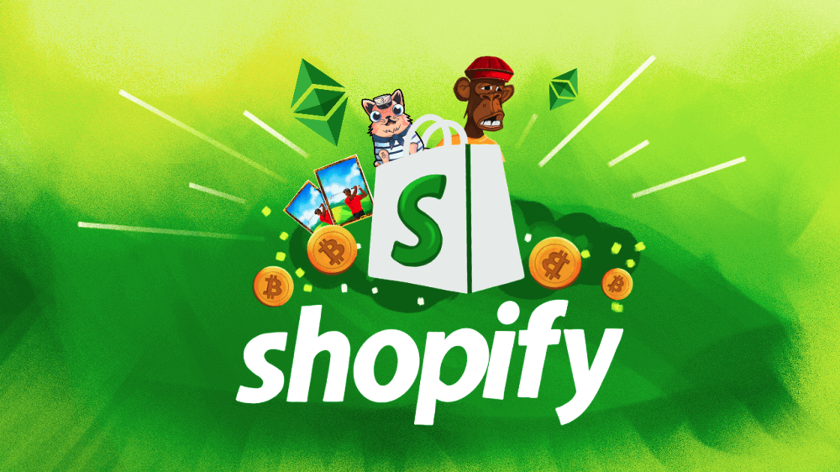Whether they turn out to be a revolution or simply a buzzword, one thing is for sure: NFTs are everywhere and they are here to stay. Non-Fungible Tokens entered mainstream consciousness in a big way last year, with major companies and celebrities increasingly engaging and investing in the market. According to a report from nonfungible.com, trading in NFTs hit $17.6 billion last year, an increase of 21,000% from 2020!
But what exactly are NFTs?
An NFT is a unique digital asset that is stored and secured on a blockchain that holds information, such as descriptions, properties, links to any type of media files—from a work of art to a legal document—or that offers related exclusive services. Up until now, digital files could be easily and endlessly duplicated. NFTs make that impossible.
NFTs can even be used as ownership records for physical assets, assuring NFT owners that they are the sole owners and backed by blockchain. The history of every NFT is recorded on the blockchain, meaning buyers can prove their ownership and creators can receive royalties every time their work is re-sold. In this way, blockchains act as a digital certificate of authenticity and are totally tamper-proof. NFTs can be traded on marketplaces, proudly displayed in online galleries or used to access exclusive content and real-life experiences.
A few years after the world’s uberization, we are now talking about tokenization: the creation of the digital representation of an asset on a blockchain. Historically, NFTs have mainly drawn attention through digital art, collectible series and virtual clothes that have reached incredible price points and created a hyper-speculative market. Now, new NFT projects are popping up every week; some creators are just looking to join the current trend, while others want to position themselves as innovators and reach young and engaged communities.
NFTs hold the potential to become a key element of a differentiated customer experience. They are a way to meet customer needs and, as such, represent an opportunity for new lucrative digital offers, which could play an important role in boosting customer engagement. And we are seeing quite a few early signs of that!
“Digital ownership offers brands the opportunity to redefine their relationship with their clients and offer new playgrounds where the engagement will create value both ways.”
- Gabriel Coder, Lead Web3 Strategist
Five Ways NFTs Are Redefining Customer Experience
1 - Enhancing and rewarding customer loyalty
Increasingly, NFT projects focus on providing customers value by giving them exclusive access to products and services. This enables brands to unlock loyalty by incentivizing desired behaviours. Tokens can be gifted, bought in the standard way, obtained through a physical product, earned as rewards by completing a task or through a play-to-earn mechanism.
NFTs are becoming synonyms of exclusive access and such tokens can be redeemed for exclusive products, whether digital or physical. Here, scarcity and artist collaboration are key to driving attractiveness. For instance, Gap collaborated with the artist Brandon Sines for its first NFT collection, in which different token levels can be combined to obtain a limited-edition hoodie and a piece of digital art.
NFT purchases can also unlock premium access and membership. They can be combined with tickets to provide access to events. This allows sellers to verify ticket authenticity, provides creators with royalties for secondary sales and becomes a commemorative asset for attendees. For example, Coachella created an NFT collection that grant customers lifetime festival passes, unlock exclusive on-site experiences or redeem physical items. Purchases also include unique perks at the 2022 festival, including a meal by a celebrity chef and front-row access to events. NFTs can also be unlocked when attending an event, as an incentive, and allow later access to exclusive activities or merchandise. This mechanism allows brands to identify and reward superfans.
Non-Fungible Tokens can also become a key part of value-added loyalty programs as a way for customers to earn more than points. Gucci sends Gucci Tokens to identified ambassadors to thank them for posting positively about the brand. With a certain amount of GucciCoins, ambassadors can access an elite community both on and offline (exclusive events, showroom access). They may even have access to limited edition products that others would not get and receive an NFT to show their status.

Coachella (source)
2 - Building communities
NFT projects help build communities around common interests and have the potential to become the means to access brand communities. In New York, the first NFT restaurant is set to open in 2023. The Flyfish Club will be a members-only—or NFT-holders-only—restaurant. The NFT grants holders unlimited access to a private dining room in an iconic location. The venue will include a high-end seafood restaurant, a cocktail lounge, an outdoor space but also a calendar of exclusive events.
NFTs often come with a strong sense of belonging and brands can tap into this sentiment to enrich the brand-customer experience and give token holders access to a community of like-minded people that resonate with the brand and provide value. For example, VeeFriends was created by entrepreneur Gary Vaynerchuck to sell access to his time (conferences, brainstorming sessions or even a breakfast with him). Token holders come together as one community to build friendship, share ideas and learn together. Looking ahead a few years, NFTs could be the central digital touchpoint between brands and their communities.
3 - Enabling co-creation
With NFTs acting as a communication channel, customers can be continuously involved in the creation and feedback processes. As a result, products and services evolve thanks to collective intelligence, while brand loyalty is strengthened. This empowers community members to become co-creators and sets up new ways to gather insights and create brand advocates. For example, Doodles NFTs holders are allowed to vote on community-driven features and future products and events. Their entire roadmap is a collaborative experience with collectors. In the near future, this kind of mechanism could also be used to co-create products and services. Instead of translating insights into opportunities, brands could instead promise NFTs that will unlock perks in exchange for consumers’ insights. We are still at the very beginning of discovering what’s possible in this area.
Many loyalty programs today are set up to benefit the companies themselves more than their customers. With NFTs, brand performance also impacts customers through token value. It involves customers a lot more, giving brands and NFT holders shared interests and making natural ambassadors.

Doodles (source)
Furthermore, NFTs can be used to enable a community to impact company decisions and outcomes via voting rights. With the emergence of DAOs (Decentralized Autonomous Organizations) fan-governance is taken to the next level as companies are collectively-owned and managed by their community members. Basically, imagine if Meta (previously Facebook) belonged to all its users and new features were subject to a vote.
4 -Transforming data usage and personalization
Legislation around data usage is in transformation and NFTs could be the next way brands provide security and trust. By allowing individual consumers to own their own data, brands could improve data privacy, and this could be leveraged to strengthen brand trust. This mainly indicates that tokens will reinvent data usage to create personalized customer experiences. In fact, the transparency of public blockchains enables interested entities to know which NFTs are held and allows them to paint a picture of the consumers, all without revealing their identity.
Today, brands spend a lot of time trying to understand what customers do, create accurate segments and personas, and identify buyer expectations. In the near future, these customers will connect to an e-commerce website with an electronic wallet, which will contain a certain number of NFT tokens that verify personal data, products already purchased, collections the customers take part in, loyalty cards, etc. Brands will automatically be able to offer personalized experiences, while separating themselves from the risks related to the collection and processing of personal data.
This will make it possible for brands to interpret the platforms and NFT communities their customers are a part of, to gain access to buyers’ interests and learn about their needs. Shopify is currently testing its NFTs integration to allow merchants to create and sell NFTs. Among other mechanisms, this integration includes marketing features that will allow brands to recognize the NFT holders visiting their websites and offer these potential buyers exclusive and/or personalized content. In the long run, we can also imagine of pre-sales mechanisms where brands will produce items based on the number of NFTs bought.

Shopify (source)
5 - Increasing transparency
Today’s context puts transparency at the fore of customer expectations. According to Sprout Social, 73% of consumers are willing to pay more for products that guarantee total transparency. Brands now have an opportunity to increase their transparency and trust by tokenizing their supply chain and supporting the circular economy. NFTs create the possibility of knowing about any given product’s lifecycle, from its creation to its sale, repair and resale.
Some NFTs can be obtained through a physical product, such as the limited series of Levis’ iconic 501 jeans. Made of organic cotton and circulose—a recycled and recyclable denim material—the jeans are guaranteed for life, thanks to NFT certification. Each model, and even each pair’s history (should it be re-sold) will be identifiable and eligible for repair if necessary in the flagship Champs-Élysées store.
New Technology Brings New Opportunity
Even while a lot of consumers remain unclear on exactly what NFTs are and how to use them, the fact is this technology is integral to the future of the web. And unlike certain emerging technologies we’ve explored in the past (gesture and voice control, for example), NFTs don’t require the end user to fully understand them to offer value to the brands utilizing them. Therefore, it’s only crucial that brands understand how NFTs work, so that they seize the possibilities going forward.
For a lot of companies, capitalizing on this knowledge will require a strategic digital partner, not only to deepen their understanding, but also to create and deliver the experiences NFTs hold the potential to create.
It would seem that NFTs are here to stay and that they will offer companies great opportunities to reinvent their customer experience! In the long run, their utility will matter more than their collectability, and our understanding and experience implementing all kinds of new experiences will be major for a lot of brands going forward. Contact us today for more information on NFTs and to see what our experts can build for you.







